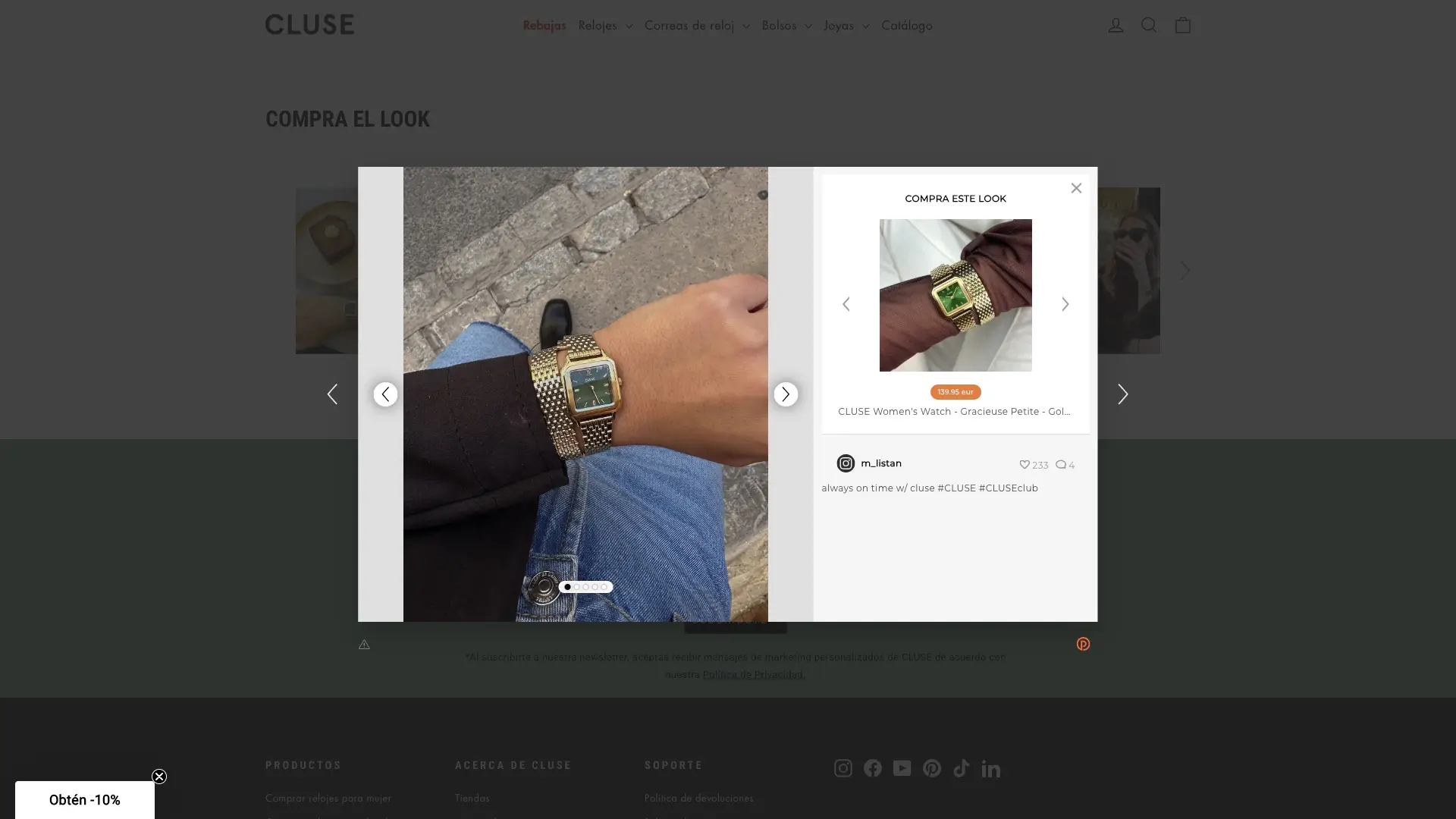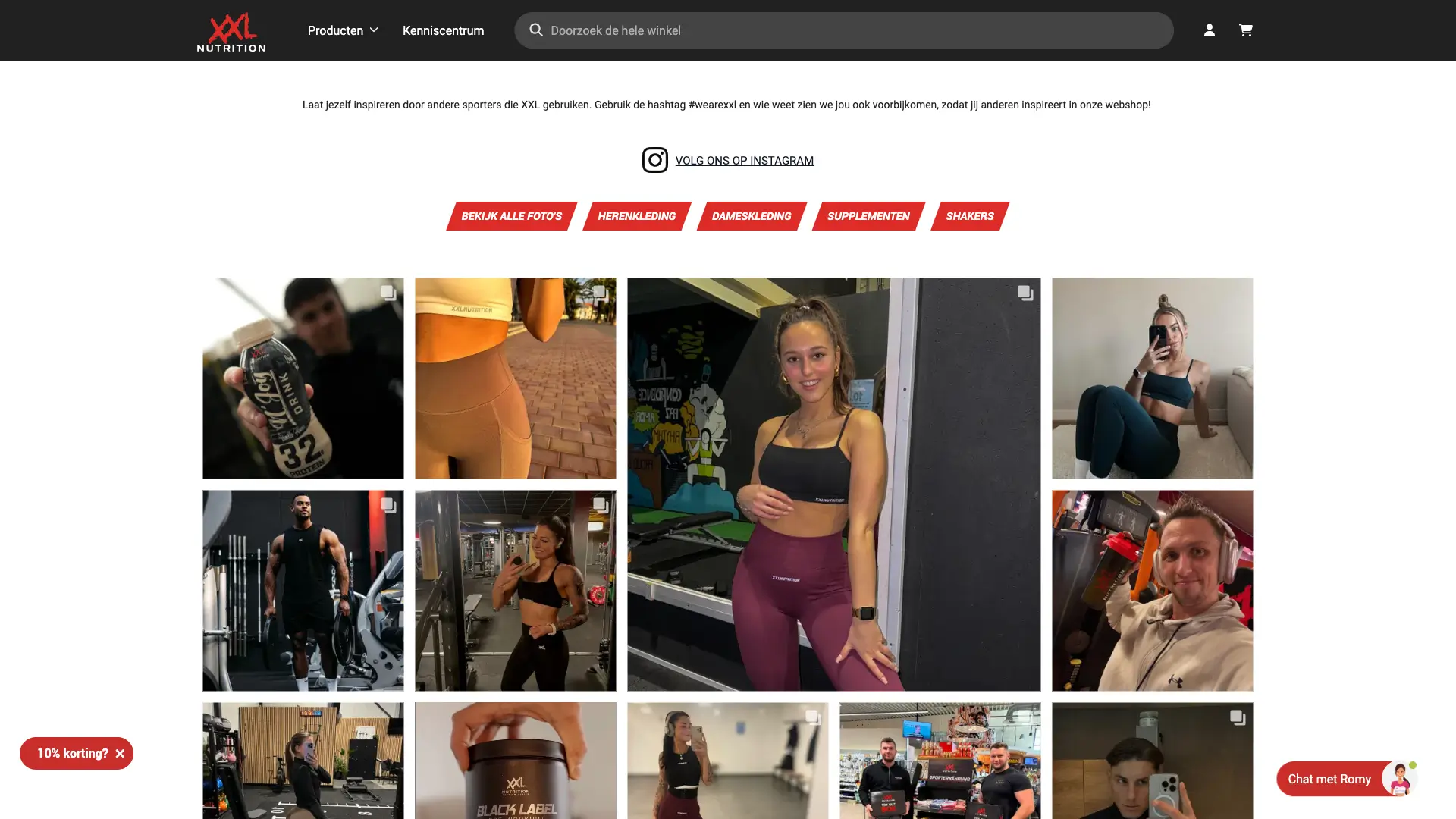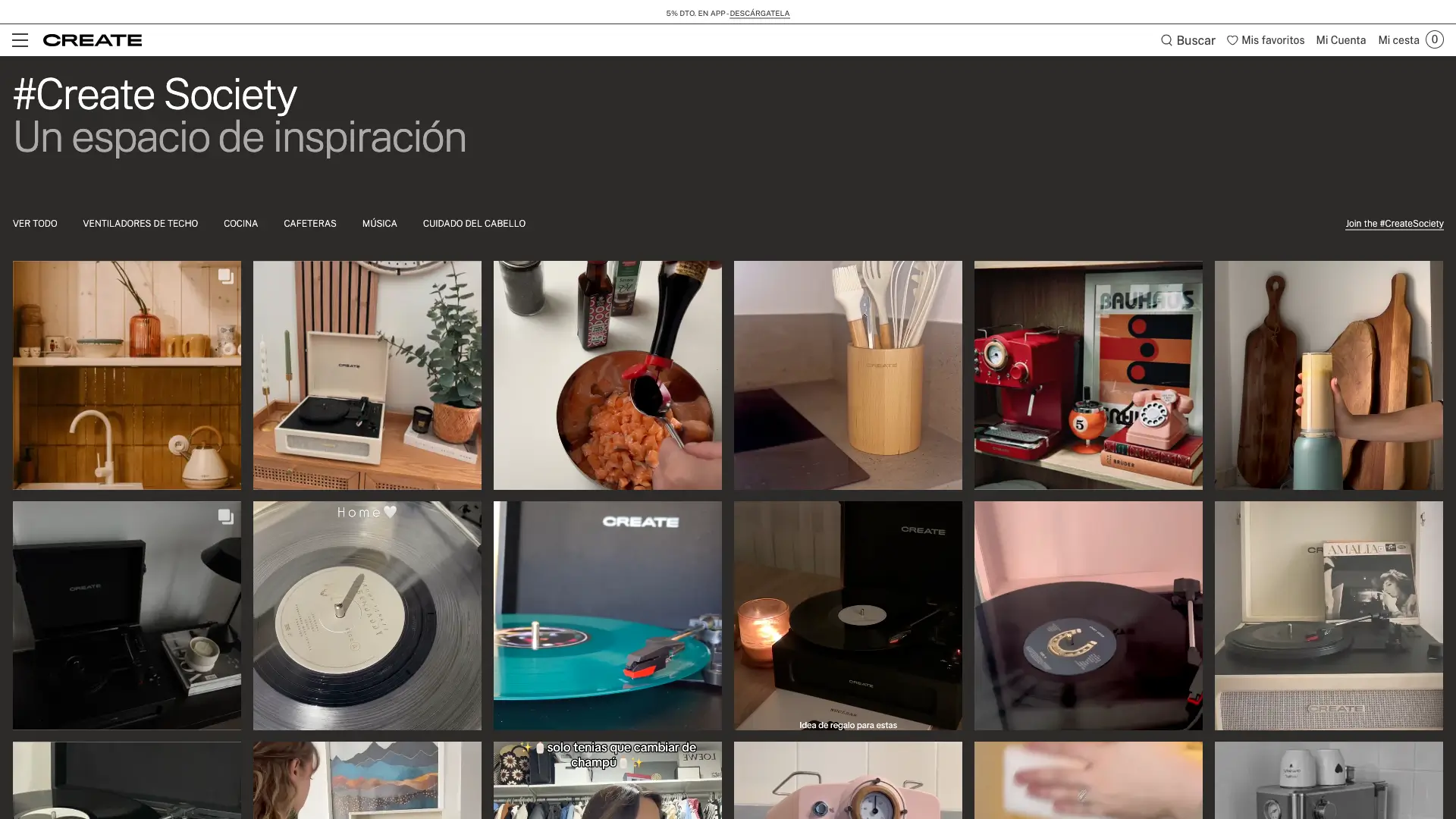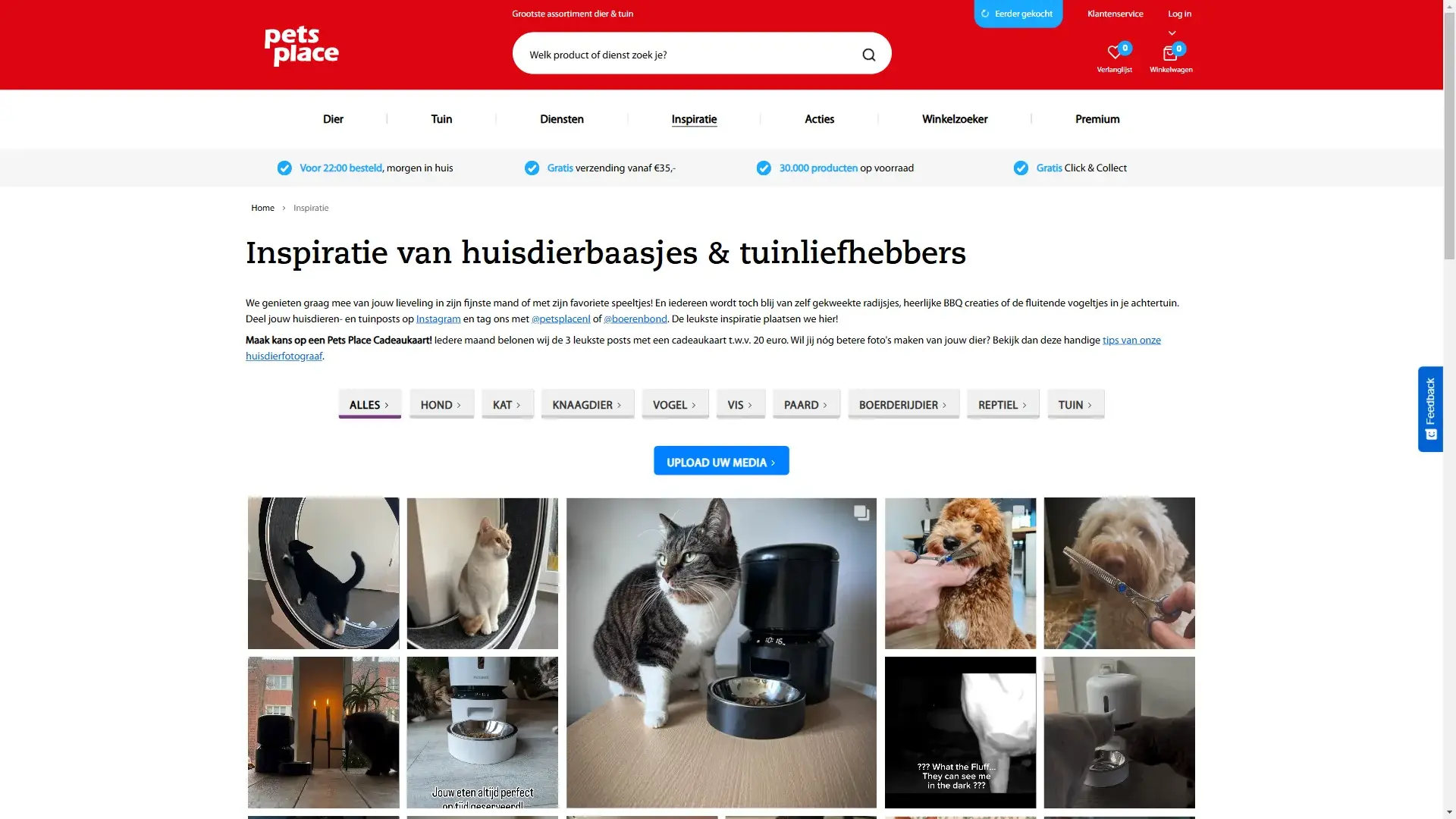Table of Contents
For some, the rise of UGC Marketing might seem like a new trend. However, for eCommerce brands, this has been a developing process for quite some time.
Content marketing no longer has to be a black hole for the ROI of digital stores. In fact, companies that are setting the pace in eCommerce use UGC to grow their communities, convert more customers, and build loyalty. Many of the leading companies in the sector are betting on strategies based on user-generated content.
It doesn’t matter if you have dozens, hundreds, or thousands of customers in your sales funnel. The truth is that there’s no better time than now to take advantage of user-generated content. Even email marketing can be enhanced with UGC, helping you improve your email strategies.
Marketing with user-generated content, or UGC for its acronym in English, is changing the game for brands across all types of industries. It’s an authentic and direct way to connect with your audience, build trust, and, as a result, boost your sales.
There are many reasons to incorporate UGC into your marketing strategy, and various brands around the world are taking advantage of it in creative ways that generate engagement. In this article, we’ll tell you everything you need to know so you can also start benefiting from this strategy.
UGC marketing, or marketing with user-generated content, is a tool to strengthen your brand image and build community. Unlike the traditional marketing approach, where the message flows from top to bottom, UGC democratizes the process. This means it allows customers from all over the world to contribute to a brand’s story.
The method is simple: collect content from social networks that customers have uploaded and use it to showcase product usage. The key to UGC is that it’s organic and authentic content, which builds trust. This strategy can be applied to multiple sectors, such as food and beverages, furniture, and fashion.
In this sense, UGC marketing consists of using the content that your own customers create, such as photos, videos, comments, and reviews, to promote your products or services. Brands typically use this content on their websites, social networks, email marketing campaigns, and other places where they can leverage these real experiences that truly connect with other users.
The rise of UGC Marketing is no coincidence: it’s the result of a perfect combination between enthusiastic consumers and the growth of eCommerce. It’s estimated that the eCommerce industry will reach a value of $8.1 trillion by 2026. Additionally, a large portion of the purchases contributing to this value are made through mobile devices and social networks.
It’s evident that most people spend a large part of their day glued to their smartphones. Mobile internet usage has surpassed desktop usage, meaning consumers are constantly planning their purchases on their phones. If you make the process easy for them, they’re likely to buy on the spot.
Now, what role does user-generated content play in all this? Instead of bombarding shoppers on social networks with ads and sales messages, UGC allows brands to sell in a more subtle and effective way.
Customers generally have no reason to exaggerate or be dishonest about a product. Therefore, UGC acts as valuable social proof demonstrating that your product truly meets expectations.
In this sense, user-generated content is the ultimate expression of social proof. Customers like your product so much that they not only leave a written review but also share it with their friends and family on social networks.
Beyond a trend, UGC marketing is a tool that helps you stand out, position your brand, and generate engagement in a world saturated with content. Here’s why:
Learn more about the benefits of user-generated content and why is it important for eCommerce brands.
Brands from different sectors are leveraging UGC to build trust in their communities while improving their conversions. Here are four examples of companies using it brilliantly.
Cluse’s philosophy revolves around simplicity, elegance, and good taste. This Dutch brand not only designs sophisticated watches but also has bet on positioning itself in the jewellery and fashion market in general.
Cluse decided to start using UGC in its marketing strategy. This would involve its customers in the brand’s story and thus encourage interaction.

They encouraged their customers to share photos and videos of their watches and jewellery with the hashtags #CLUSE and #CLUSEwatches on Facebook, Instagram, and Twitter, and Flowbox collected the tagged content to display it in a Lookbook on Cluse’s website and in carousels on their product pages.
In the subsequent performance evaluation, it was evident that Cluse increased their conversion rate by 19% since they began using UGC Marketing in their content strategy.
XXL Nutrition started selling high-quality sports supplements aimed at bodybuilders but quickly expanded their focus to professional and recreational athletes, offering products for different sports.
With the diversification of their catalog, XXL Nutrition faced the challenge of promoting each product with the same resources. Additionally, they wanted to move away from standard professional photos that they knew didn’t generate much connection with users.

To better showcase their products to potential customers, XXL Nutrition decided to rely on their community to share images of their purchases. Using the Flowbox platform to manage this content not only helped generate trust among new visitors but also strengthened the loyalty of existing customers, who could see themselves reflected on the brand’s website when they returned to shop.
This Spanish brand specializes in creating home appliances with aesthetic and innovative designs. Create has integrated UGC marketing into different sections of its website, including the main page, community, and product pages.

In the first six months of implementation with Flowbox, they’ve obtained more than 350 quality publications generated by users, which have been shared both on their site and social networks.
More than 10% of users who have interacted with UGC connected to products have clicked on the “View Product” button, being directed to the product page. A clear demonstration of how UGC galleries and carousels are great for directing traffic to the most important places of an eCommerce: product pages.
With Flowbox, Pets Place has found a smart way to integrate photos of their customers’ pets into both online and offline marketing activities.
With new players entering the market, Pets Place knew they needed a strong online presence to stay ahead of the competition. Stock photos were frequently used on the website, and User-Generated
Content was more of an exception than a standard element. Scaling and using UGC more strategically was difficult without the right tools.

After implementing Flowbox, Pets Place not only increased their revenue by 5% but also increased the number of tags related to their brand on Instagram from 80 to 1280 tags per month.
If you’ve been hesitant about how to implement UGC in your marketing strategy or don’t know where to start, don’t worry. More and more brands are betting on user-generated content, and the first step is to understand the opportunities it offers that can make a difference in eCommerce. It’s never too late to join this strategy!
Of course, it’s important to adapt best practices to your particular industry. To help you in this process, at Flowbox we regularly create case studies of our clients, demonstrating how UGC has benefited them and how it can do the same for you.
And if you’re ready to take the next step, we’ll explain in more detail how Flowbox can boost your business thanks to the tools of its UGC platform, the most advanced in Europe.
Connect your website and social networks with customized widgets that adapt to your brand’s needs. The platforms you can establish as content collection sources are:
Flowbox also integrates easily with other tools, such as the most recognized eCommerce creation tools, including Magento and Shopify, among many others.
With the Flowbox platform, you can manage all the content collected through mentions, tags, or hashtags from the same dashboard; moderate it, request media rights from creators, connect products to content, assign tags to categorize it, etc.; and finally distribute it: republishing it on your social networks or on your eCommerce website, either on the homepage as inspiration or on product pages to increase conversions and cart size.
Flowbox automatically collects content from hashtags, tags, and mentions, facilitating the selection work. Instead of manually searching for user-generated content, the platform’s tools allow you to collect content from different sources: directly from the user –Media Uploader button– or by connecting a social media platform as a source that you can then publish on your social media channels or embed on your website.
Create seamless shopping experiences by integrating user content directly into your website. Customers can explore products and buy them effortlessly.
The Dynamic Tag Flow feature helps you distribute content automatically by assigning tags to content. This function helps you create seasonal campaigns, filters, or flows by categories to show different themes within your content.
Measure the impact of your UGC campaigns with data on conversion, reach, and participation. Track the performance of user-generated content across all channels with the platform’s analytics features, which help you make data-driven decisions about your UGC marketing strategy.
With Google Analytics 4 integration, you can send analytics events directly from your flows, allowing you to monitor user interactions, track conversion paths, and measure the impact of your UGC campaigns, along with your other marketing metrics in a single panel with centralized information.
Discover more about Flowbox’s advanced analytics and how you can leverage data-driven marketing.
There are no limits when it comes to UGC Marketing strategies. The Flowbox team is always available to help you design a strategy that fits your goals.
Beyond a tool, Flowbox is a strategic ally that helps you stand out in your market and better connect with your audience.
UGC Marketing has proven to be a powerful strategy to connect with customers authentically, build trust, and increase conversions. Throughout this article, we’ve seen how it works, why it’s so effective, and how brands from different sectors have successfully leveraged it.
The benefits are clear: more interactions, greater credibility, reduced costs in content production, and an increase in sales. Additionally, UGC allows humanizing the brand and strengthening the community, something key in a digital world where consumers seek real experiences and genuine recommendations.
With tools like Flowbox, you can transform your users’ content into a powerful strategy that drives sales and creates community. What are you waiting for? Request a demo to discover all the possibilities of UGC Marketing with Flowbox.
In this section, we answer some frequent questions about UGC to clear up all your doubts.
A UGC Marketing strategy involves encouraging and leveraging content created by consumers to increase brand engagement and showcase its authenticity.
There are many ways to implement UGC in your brand’s marketing strategies. A concrete example could be running a contest on social networks where followers share photos or videos using your product, and using this content to publish it on your website.
You can promote the creation of UGC within your community by creating specific hashtags, highlighting user content on your website or social networks, and incentivizing participation with rewards or recognition.
UGC is key because it encourages community participation, builds trust, and offers authentic perspectives on products or services, which can significantly influence purchasing decisions.